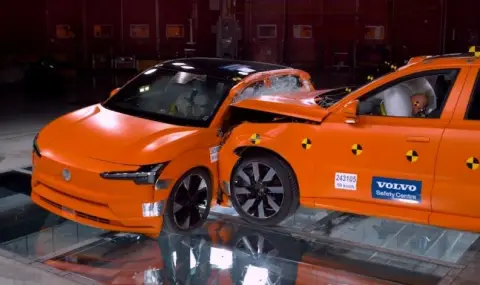Let's face it, the thought of a large SUV hitting a relatively small car sounds absolutely terrifying. As scary as this may seem, however, Volvo is confident that you will still be able to get out alive and well after a side impact. At its safety center in Torsland, Sweden, the Geely-owned brand conducted a crash test with models located at opposite ends of the model range.
At just 4,233 millimeters long, the EX30 is the smallest model Volvo sells. It weighs just over 1,830 kilograms in its original configuration before you start adding equipment. The EX90 on the other hand is an electric behemoth that stretches 5,037 millimeters in length and weighs over 2,700 kilograms in its lightest configuration. Automotive News Europe shows us what happens when the Swedish automaker's biggest car hits its smallest.
It is worth noting that at the time of the collision, the EX90 was traveling at a speed of 50 kilometers per hour and the EX30 at a speed of 20 kilometers per hour. Speaking of speed, from 2020 all Volvo models are electronically limited to 180 km/h.
Lotta Jakobsson, senior technical specialist for injury prevention, explains how the design of the EX90 reduces the risk of injury to people in the EX30. The lower front structure of the larger SUV interacts with the side structure of the smaller vehicle to better absorb impact.
Since both SUVs are brand new, neither the EX30 nor the EX90 have yet been tested by Euro NCAP or NHTSA, but it would be a surprise if either SUV gets a rating below the maximum. Volvo's mission is not only to make its cars safer in the event of an accident, but also to eliminate the possibility of an accident. This is part of the Volvo Group's safety concept of how accidents on the road can be prevented.
